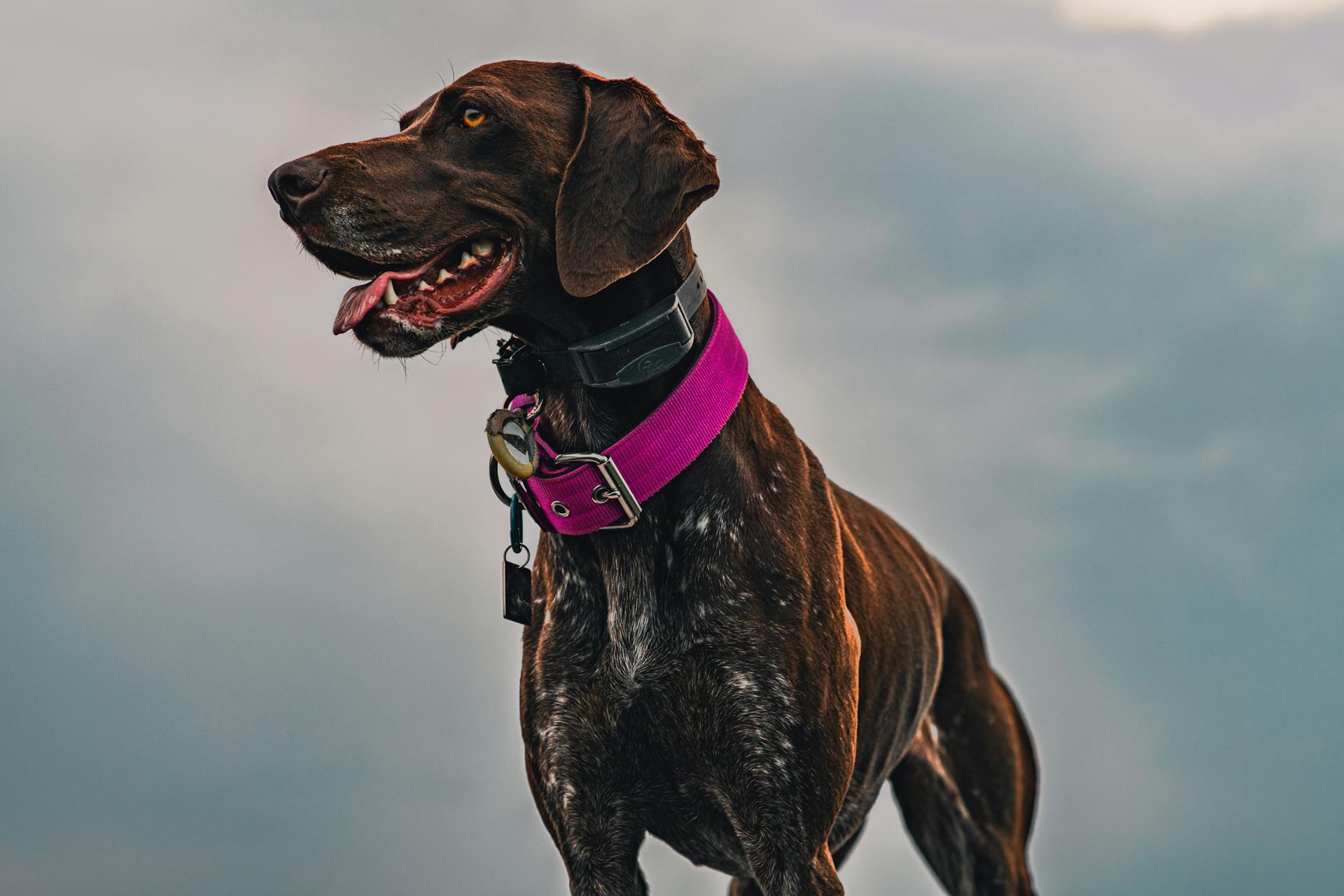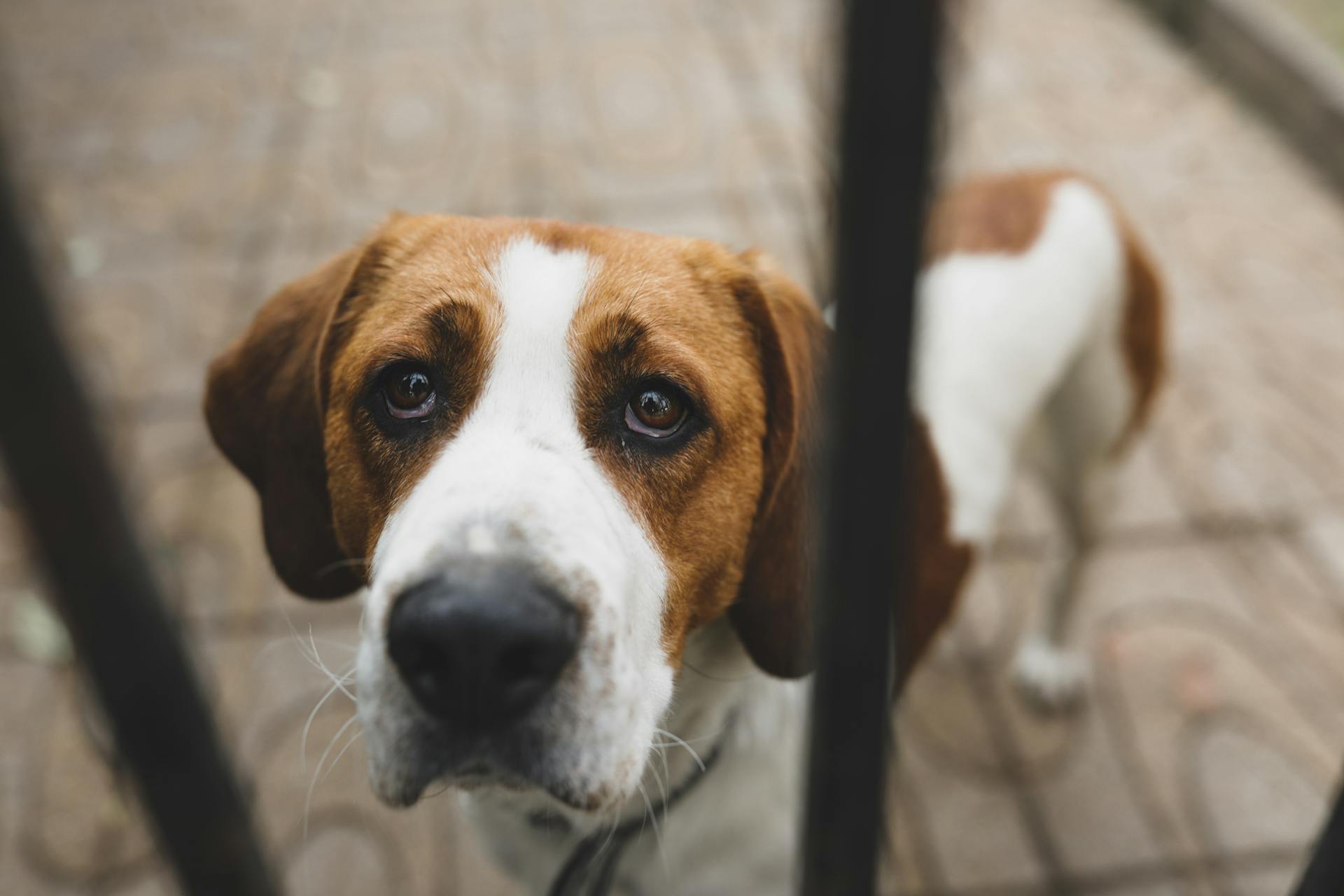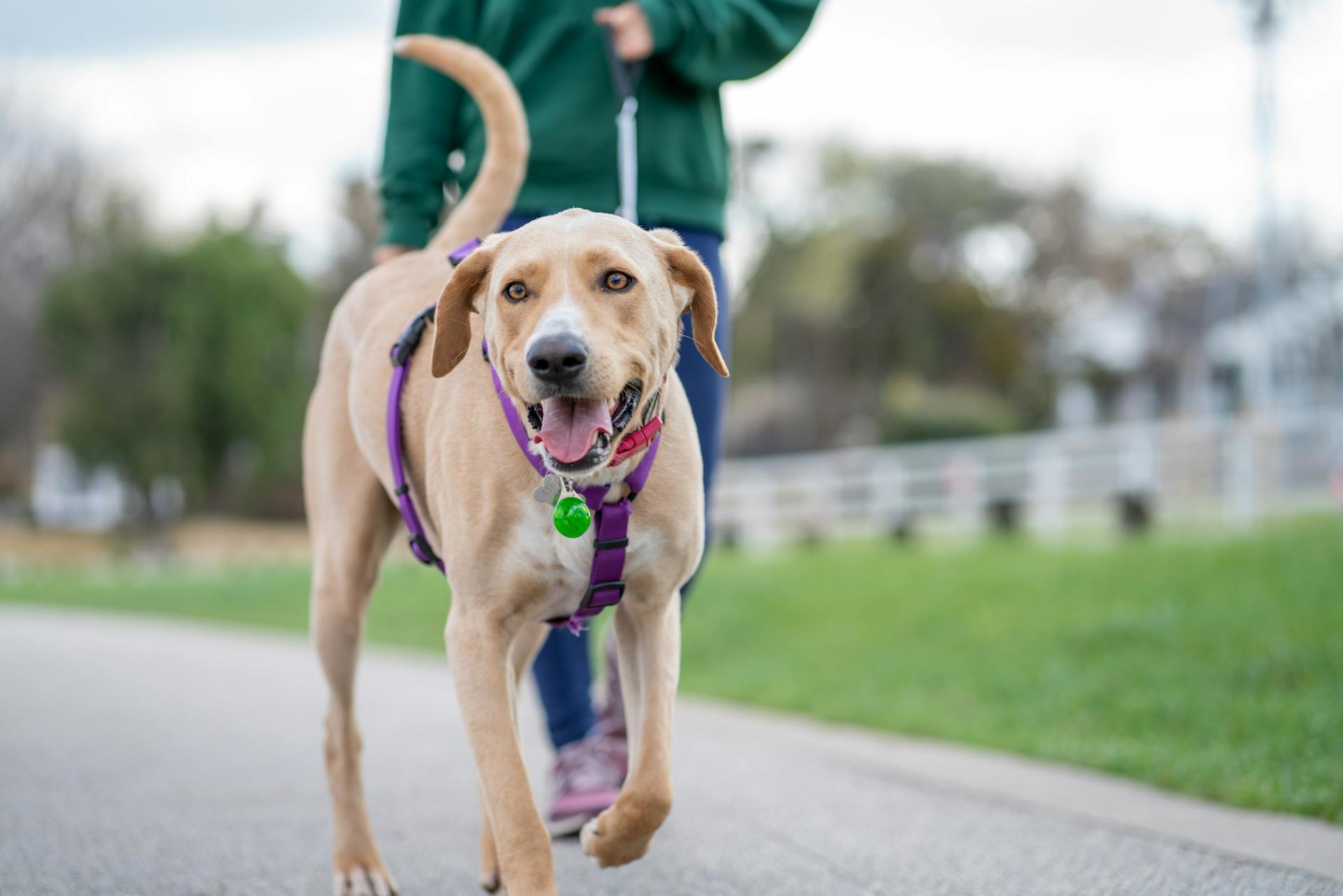
The Foxhound is a breed of dog known for its athletic ability and friendly temperament. They were originally bred for hunting small game.
Foxhounds are medium to large dogs, typically weighing between 60-80 pounds.
Their short coats require minimal grooming, making them a great choice for busy owners.
American Foxhound
The American Foxhound is one of the first breeds to originate in the United States.
Their name is borrowed from the English Foxhound, who was known for fox hunting in western Europe.
The first American Foxhounds were brought to the Americas in the mid-1600s and established as a black-and-tan variety.
The working pack of Robert Brooke was the ancestral group for all current-day American hounds, including the Foxhound's cousins, the Coonhounds.
American Foxhounds were bred as a pack hunting dog, particularly for fox club hunting.
Today, they remain a pack hunter and favorite among American hunters for their speed and scenting abilities.
The American Kennel Club officially recognized the American Foxhound in 1886, but registration numbers remain extremely low for this breed.
The American Foxhound is tri-colored, either black, white, and tan or white, black, and tan, though a Foxhound can be born with any color combination, including red and blue.
The tail of the Foxhound is set high and ends with a slight brush but does not curl over the back.
Their coat is medium length, close to the skin, and hard to protect them while running through rough terrain.
The American Foxhound has a deep chest to accommodate a great lung capacity for running.
They are very tolerant of strangers, so they do not make good guard dogs but they are great with children and other medium to large dogs.
With proper training, your Foxhound can be very affectionate with people.
The American Foxhound was recognized by the United Kennel Club in 1905.
This breed's hips and thighs are heavily muscled leading into straight thin legs, which demonstrate the Foxhound's great fleet ability and powerful propulsion.
The American Foxhound can live in harmony with smaller pets, such as cats, rabbits, or birds, if introduced at an early age.
However, it's not advised to leave a small pet alone with a Foxhound since they are bred for the chase.
Physical Characteristics
The American Foxhound is a tri-colored breed, typically featuring a combination of black, white, and tan, although they can also be born with other color combinations. Their coat is medium length, close to the skin, and hard, which helps protect them while running through rough terrain.
Their ears are floppy and set moderately low, with a long head and a deep chest to accommodate their great lung capacity for running. They have a straight, long, and muscular back, with straight forelegs and foxlike feet.
The English Foxhound is slightly shorter, standing around 25 inches tall, and has a shiny, short, dense coat with a hard texture. They usually come in a tricolor pattern of black, white, and tan, but can also be white with hare, badger, tan, or yellow.
Consider reading: Dog Hair Types
Appearance
The American Foxhound is a tri-colored breed, typically featuring a combination of black, white, and tan, although they can be born with any color combination. The tail is set high and ends with a slight brush.
Their coat is medium length, close to the skin, and hard to protect them while running through rough terrain. The ears are floppy and set moderately low.
The English Foxhound has a shiny, short, dense coat with a hard texture, often in a tricolor pattern of black, white, and tan. They can also have other color combinations like white with hare or badger.
Their head is long and flat, with a large nose and big nostrils. The English Foxhound has a long neck and a deep chest, perfect for hunting or running.
A different take: Smooth Haired Fox Terrier Puppies
Size
If you're looking for breeds similar in size to the American Foxhound, you've got a few options. The French Spaniel is a great match, with a 98% similarity in size.
The English Foxhound is a bit larger than the American Foxhound, standing between 23 to 27 inches tall at the shoulder. Males are generally larger than females.
Here are some breeds that are similar in size to the English Foxhound:
- French Spaniel - 98% Similar
- Aidi - 97% Similar
- Harrier - 97% Similar
- Polish Hunting - 97% Similar
- Pharaoh Hound - 97% Similar
Care and Maintenance
Foxhounds are relatively easy to maintain, especially if you lead an active lifestyle. They need regular exercise to burn off their natural energy, so take them on daily runs or provide other exercise to keep them happy.
Brushing your Foxhound is essential to reduce shedding and prevent dog odor. A weekly brushing with a rubber curry brush or hound mitt can help control shedding and distribute skin oils to condition their coat naturally. Brush their teeth daily to prevent tooth decay and bad breath.
Check their nails weekly for tears and grind or clip them as necessary to prevent splintering. It's also essential to check their ears regularly for wax, dirt, and other debris, as their pendulous ears can be prone to infections.
See what others are reading: Bernese Mountain Dog Exercise
Maintenance
American Foxhounds are relatively low maintenance when it comes to grooming, requiring only moderate shedding and a weekly brushing to keep their coat in good condition.
Their hard and straight coat is easy to maintain, but regular brushing can help reduce dog odor and promote bonding between you and your dog.
Recommended read: Bernese Mountain Dog Coat
Brushing your American Foxhound's teeth at least twice a week is crucial to prevent dental issues.
English Foxhounds, on the other hand, need to be brushed only once a week with a rubber curry brush or hound mitt to control shedding and distribute skin oils.
You should also check their ears regularly for wax, dirt, and other debris, as they can be prone to infections.
English Foxhounds are relatively easy to care for, but they do require regular exercise to burn off their natural energy.
They are bred to be fast hunters and need daily runs or other exercise to keep them happy and healthy.
Crate training is essential for English Foxhound puppies, as it helps prevent them from getting into things they shouldn't and keeps them safe.
Regular nail trimming is also necessary to prevent splintering, and you can do this at home with a veterinary-approved nail grinder or clipper.
Daily brushing of your English Foxhound's teeth is even better than weekly brushing to prevent gum disease and bad breath.
For more insights, see: Dogo Argentino Teeth
Nutrition and Feeding

Nutrition and Feeding is a crucial aspect of caring for your English Foxhound. They have large appetites and require a different balance of nutrients compared to smaller-breed dogs.
A balanced diet is essential to prevent bloating and stomach problems in Foxhounds with deep chests. Smaller, more frequent meals can help minimize this risk.
The recommended daily amount of food for an adult Foxhound is 2.5 to 3 cups of high-quality dry food a day, divided into two meals.
Health and Temperament
The American Foxhound is a sweet dog with a lot of patience, but bred for activity. They are not a great choice for novice dog owners, especially those living in urban areas.
Foxhounds are generally healthy, but like all breeds, they're prone to certain health conditions. You should expect to see health clearances from reputable breeders for hip dysplasia, elbow dysplasia, hypothyroidism, and von Willebrand's disease.
If you're considering bringing a Foxhound into your family, it's essential to socialize them with people and other dogs from an early age. This will prevent a strong pack bond over the family bond and ensure your Foxhound responds to you as the pack leader.
Readers also liked: Bernese Mountain Dog Hip Dysplasia
Here are some common health issues to be aware of in Foxhounds:
- Hip Dysplasia: a degenerative disease that can be linked to environmental conditions such as poor nutrition or putting on too much weight at an early age.
- Renal Disease: a condition that occurs when the kidneys are unable to clear the blood of certain toxins.
- Epilepsy: a hereditary disorder that causes seizures in the dog.
Health
The Foxhound is a hardy breed with few health problems, but it's essential to be aware of the potential issues that can arise.
Hip dysplasia is a degenerative disease that affects the hip joint, causing abnormal growth and development. It's a genetic disease that breeders screen for, but it can still occur in puppies with parents free of the disease.
Renal disease, also known as kidney disease, occurs when the kidneys can't clear the blood of toxins like creatinine and urea.
Epilepsy is a hereditary disorder that causes seizures in Foxhounds, but it can be treated with medication and managed effectively.
A good breeder will show you health clearances for both parents, proving they've been tested for conditions like hip dysplasia, elbow dysplasia, hypothyroidism, and von Willebrand's disease.
To confirm health clearances, you can check the Orthopedic Foundation for Animals (OFA) website at offa.org.

Here are some common health issues to be aware of in Foxhounds:
- Hip Dysplasia: a degenerative disease in which the hip joint is weakened due to abnormal growth and development.
- Renal Disease: Also known as kidney disease, it occurs when the kidneys are unable to clear the blood of certain toxins such as creatinine and urea.
- Epilepsy: The English Foxhound can suffer from epilepsy, a disorder that causes seizures in the dog.
American Temperament
The American Foxhound temperament is a unique blend of patience and activity. They are bred for the chase and will find ways to occupy themselves if they don't have space or time for running.
American Foxhounds are known to be stubborn and prey-minded, especially when they pick up a scent. With proper training, they can be very affectionate with people and great with children and other medium to large dogs.
They are also surprisingly tolerant of strangers, but this doesn't mean they make good guard dogs. Socialization from a young age is crucial to prevent a strong pack bond over the family bond.
If you have other dogs, be sure to socialize your Foxhound with people often and introduce them to small pets at an early age. However, it's not advised to leave a small pet alone with a Foxhound, as they are bred for the chase.
Additional reading: Game Bred American Pit Bull Terrier
Here are some key characteristics to keep in mind:
Overall, the American Foxhound is a sweet dog with a lot of patience, but they require an active lifestyle and regular exercise to prevent destructive behavior.
Highlights
English Foxhounds are known for their friendly and social nature, getting along well with other dogs and people, making them great companions. They have a gentle temperament and are easy to train, but do require early socialization.
Their lifespan is relatively long, ranging from 10-12 years or 10-13 years, depending on the source. This means they can be a long-term companion for many years.
These dogs are built for endurance, with a large size range of 29-32kg and 58-64cm in height. They have a short, dense coat that requires moderate grooming, making them a practical choice for many owners.
English Foxhounds are highly energetic and require a lot of exercise, with a recommended daily dose of at least 2 hours of physical activity. They thrive in active households and enjoy various outdoor pursuits.
Here's a quick rundown of their key characteristics:
Overall, English Foxhounds make great companions for active individuals and families, requiring regular exercise and socialization to thrive.
Frequently Asked Questions
Is a Foxhound a good house dog?
Yes, Foxhounds are generally excellent house dogs, known for their easygoing and good-natured temperament. They are a great fit for families with children and can even get along with some pets.
Are Foxhounds and beagles the same?
No, Foxhounds and Beagles are not the same, although they share a common ancestry. They were developed for different hunting purposes, resulting in distinct characteristics and abilities.
Do Foxhounds bark a lot?
English Foxhounds are known to be vocal, but they can be trained to quiet down quickly when needed.
Is the American Foxhound a rare breed?
Yes, the American Foxhound is a rare breed, ranking 196 out of 201 recognized breeds by the AKC. This rarity makes it challenging to find one in shelters or rescue groups.
Do American Foxhounds shed a lot?
American Foxhounds shed a moderate amount of hair, but regular brushing can help reduce shedding. Regular grooming is recommended to manage their coat.
Featured Images: pexels.com

